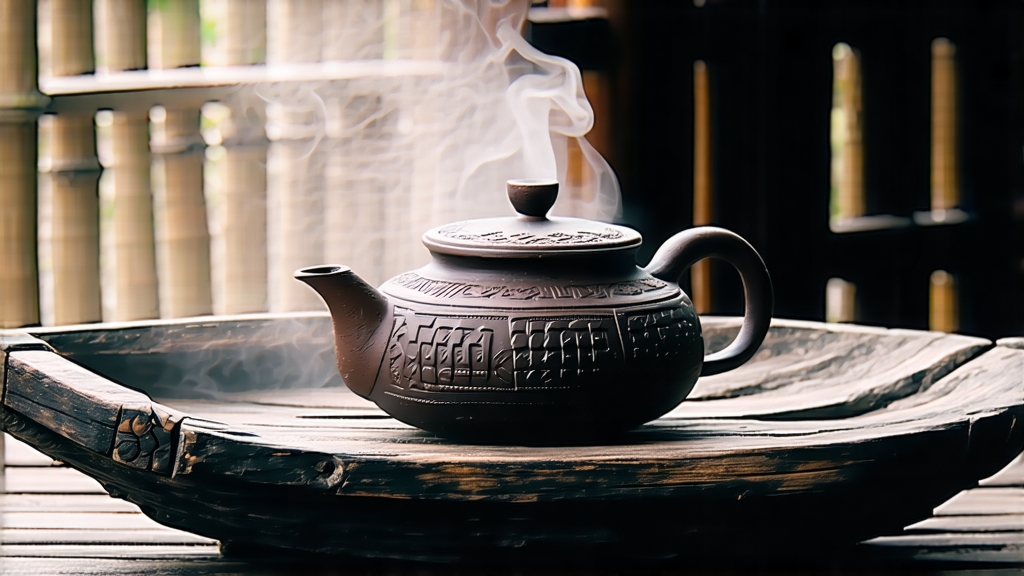
Liu Bao, literally “Six Forts,” is the quiet genius of China’s dark-tea family. While Pu-erh has conquered auction houses and social-media feeds, Liu Bao has spent four centuries maturing in the humid mountain folds of Guangxi, emerging only when it is ready to tell its story. To the international palate it is still an insider’s secret, yet one sip reveals why caravan mules once carried it to the edge of Southeast Asia and why Malaysian tin-mine coolies trusted it to cool their bodies and settle their stomachs. This article invites you to meet Liu Bao on its own terms: a living tea that ages like a jazz record—deeper, smoother, and more mischievous every decade.
-
Historical footprints
The earliest written record appears in the 1863 Cangwu County Gazetteer, noting that “black cakes from Liu Bao” were bartered for salt and medicine. By the Qing dynasty the tea had joined the legendary “Tea Road to the Sea,” a 1,200-kilometer chain of rivers, footpaths, and portages that began at the docks of Wuzhou and ended in Kuala Lumpur’s Hakka kongsis. Steamships replaced caravans in the 1920s, but Liu Bao remained the ballast that steadied Chinese migrants against equatorial heat. In 1959 the state designated it one of China’s three “border-selling teas,” alongside Pu-erh and Hunan Qianliang, ensuring steady production for ethnic-minority markets. Only since 2005, when Guangxi producers abandoned crude mass-market bricks and returned to small-batch, bamboo-basket aging, has Liu Bao re-entered the global specialty scene. -
Terroir and leaf
The micro-region lies between 23–24 °N latitude where the Dayao Mountains funnel warm, fog-laden air into the Liu Bao valley. The native cultivar, Camellia sinensis var. sinensis cv. Guangxi Da Ye, bears leaves the size of a sparrow’s wing—broader than Yunnan’s Da Ye yet thinner, allowing faster microbial invasion. Soils are lateritic, rich in iron and potassium, and the annual rainfall of 1,800 mm arrives in brief, torrential bursts that wash leaf surfaces clean, reducing mold risk before piling. Farmers pluck one bud with three or four leaves from late April to mid-May, when amino acids peak and fibrous stems begin to stiffen, providing the hollow channels that oxygen will later colonize. -
Crafting darkness: the double fermentation
Liu Bao is not merely oxidized; it is coaxed through a two-stage fermentation that tea scientists call “wet piling followed by basket aging.”
Stage 1 – Sha Qing (kill-green): 20 kg batches are pan-fired at 280 °C for four minutes, enough to denature polyphenol oxidase but preserve leaf elasticity.
Stage 2 – Rolling: A peculiar 45-minute “cold roll” under 20 psi pressure ruptures 70 % of cell walls without extruding juice, creating the fuzzy surface microbes adore.
Stage 3 – Wet Piling: Leaves are sprayed with mountain spring water (28 % moisture), heaped 70 cm high, and covered with jute. Internal temperature climbs to 55 °C within 36 hours; every 48 hours the pile is turned and re-sprayed. Over 12–18 days the dominant microflora shifts from Aspergillus niger to beneficial yeasts such as Blastobotrys adeninivorans, producing the trademark betel-nut aroma.
Stage 4 – Drying: After the pile cools to 35 °C, leaves are sun-dried on bamboo screens for three fair-weather days, reducing moisture to 12 %.
Stage 5 – Steam Pressing: The semi-fermented maocha is steamed for 90 seconds, then packed into 40 kg bamboo baskets lined with untreated banana leaf. The basket’s convex base allows airflow; the banana leaf imparts a subtle green note that later mellows into orchid.
Stage 6 – Warehouse Aging: Baskets are stacked in riverside caves or climate-controlled rooms kept at 28 °C and 85 % relative humidity. Every June and December the pile is rotated so that each basket spends time near the humid floor and the drier ceiling. Minimum commercial aging is 18 months, but connoisseurs seek 10-, 20-, even 50-year lots.
- Commerce: grades and